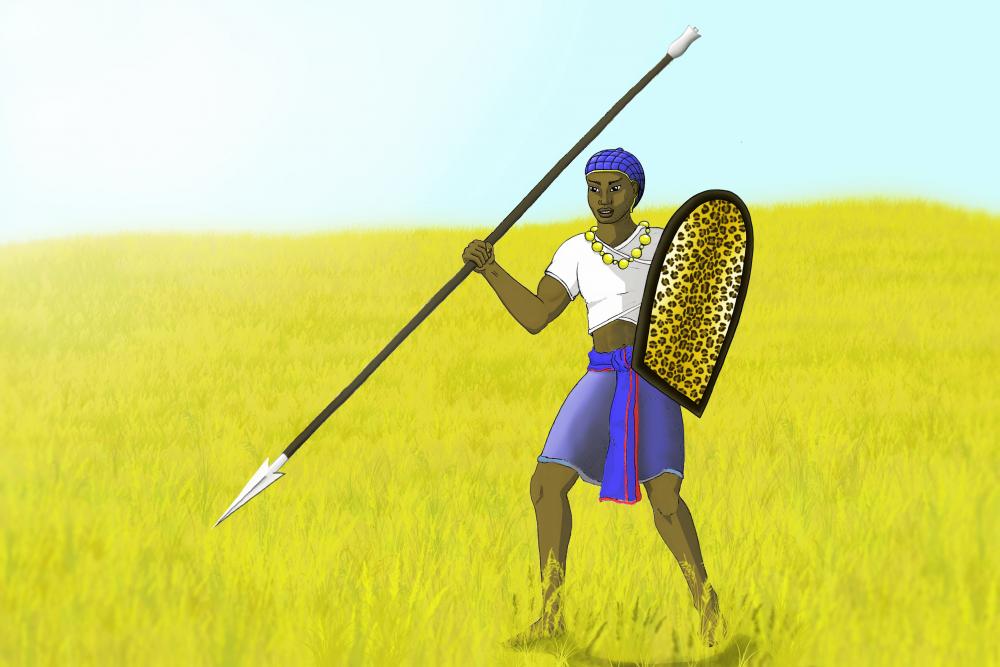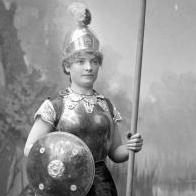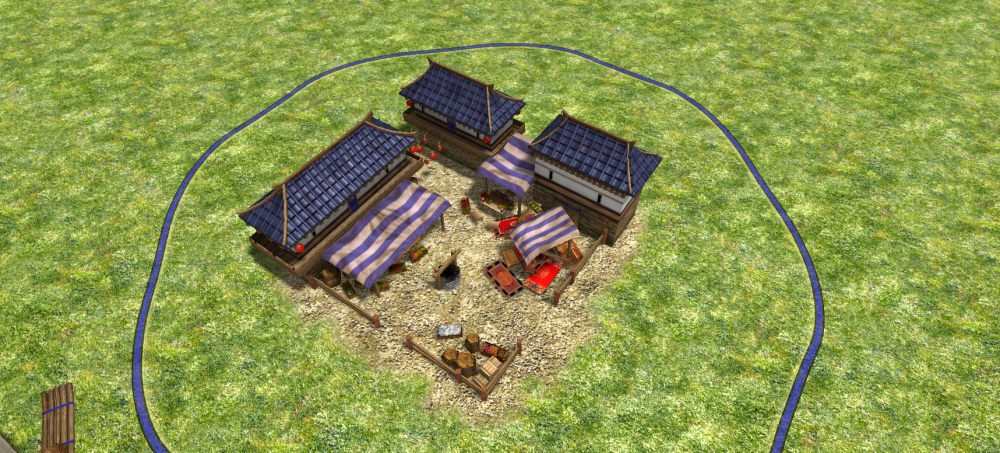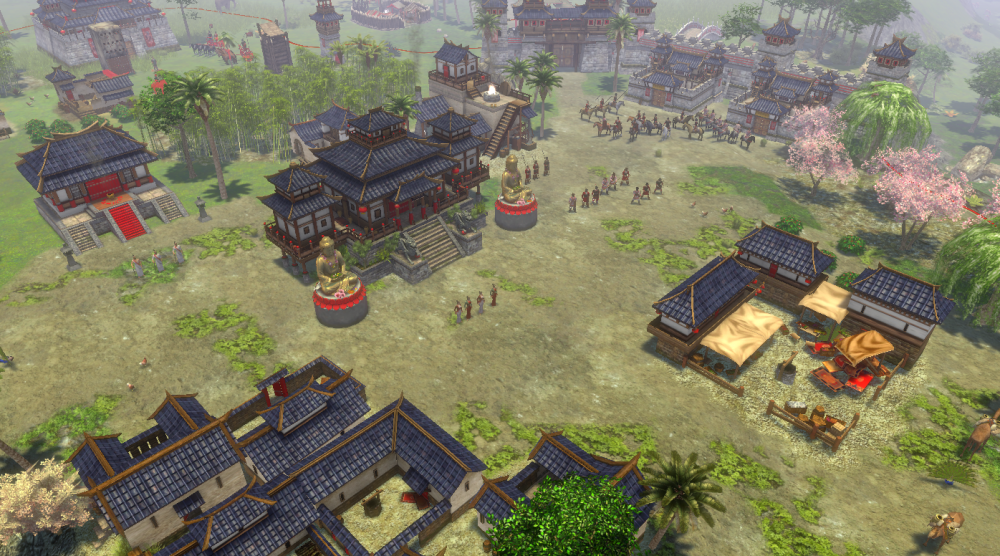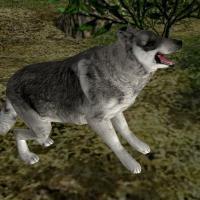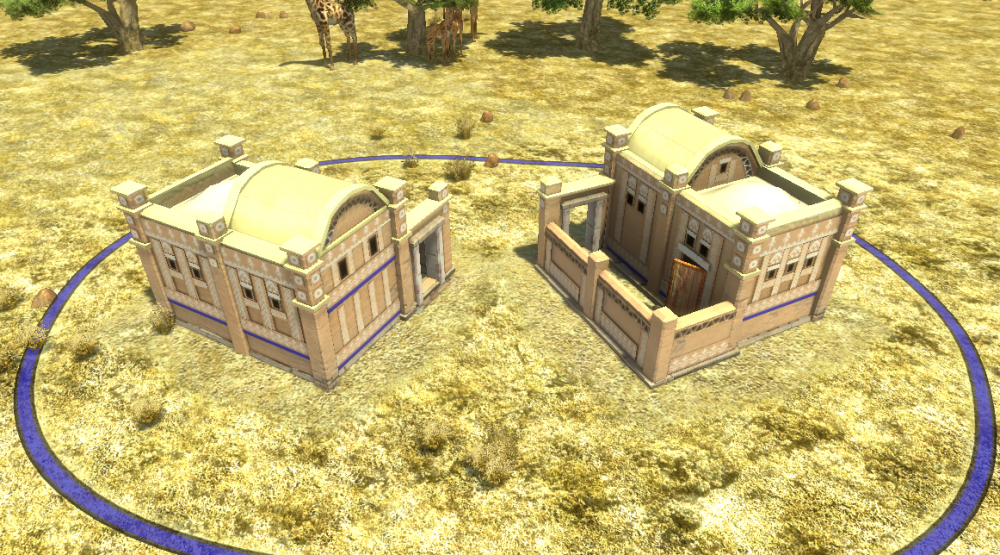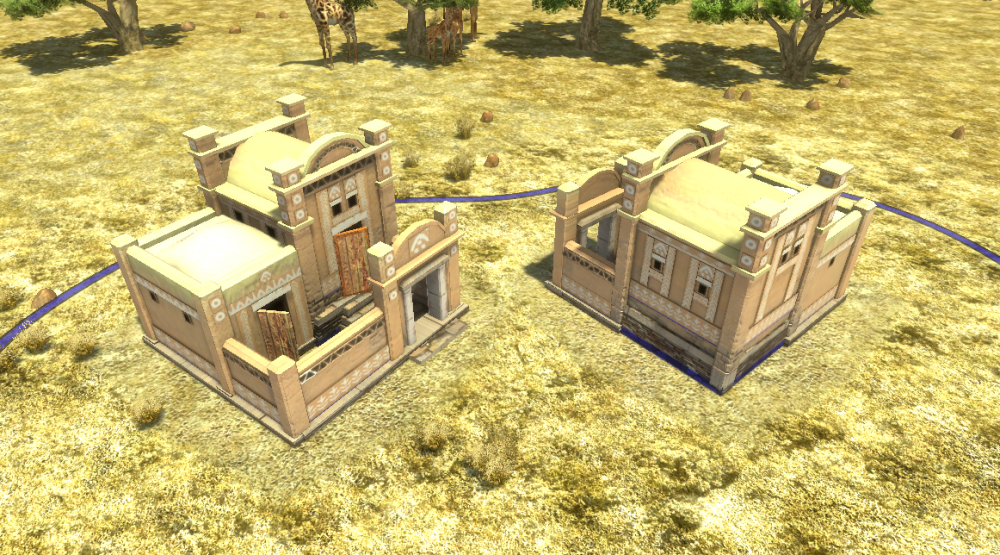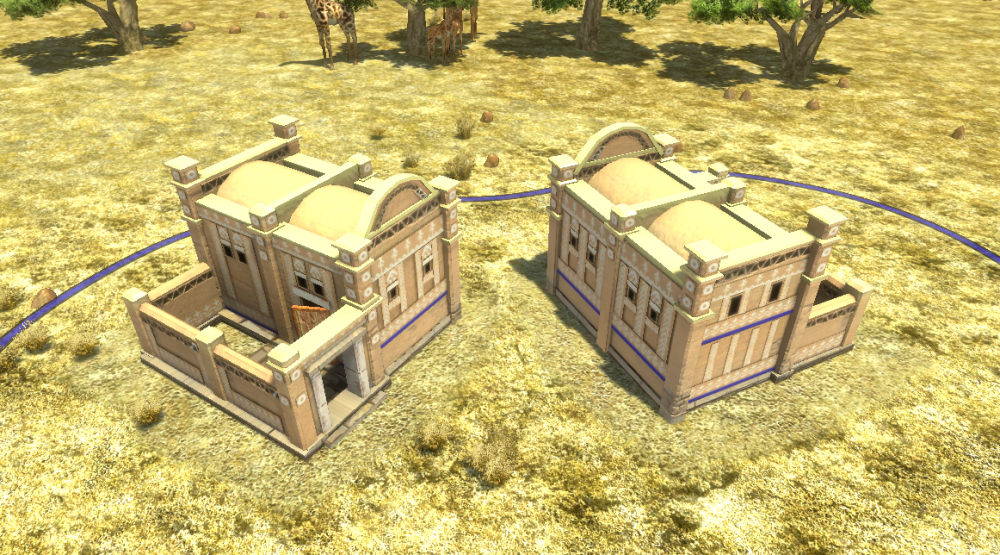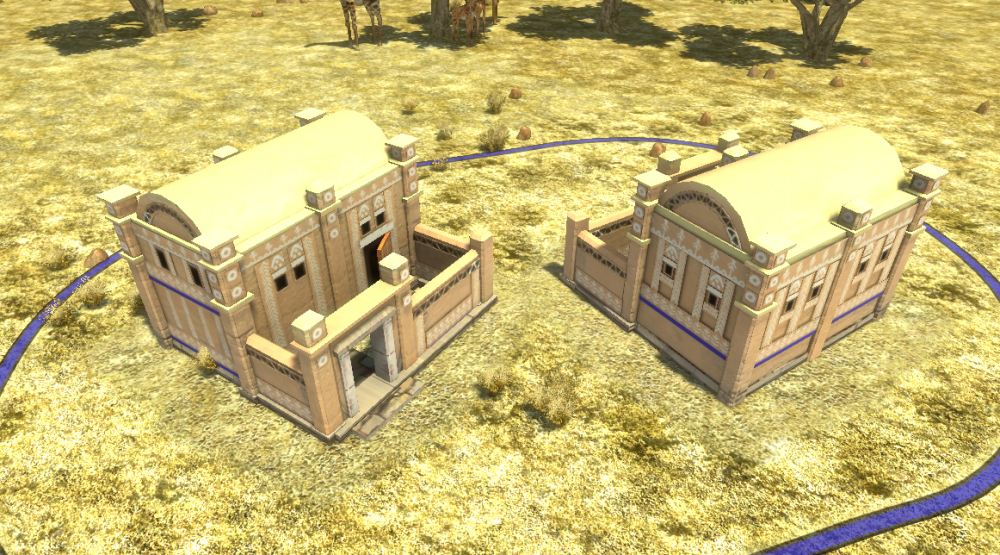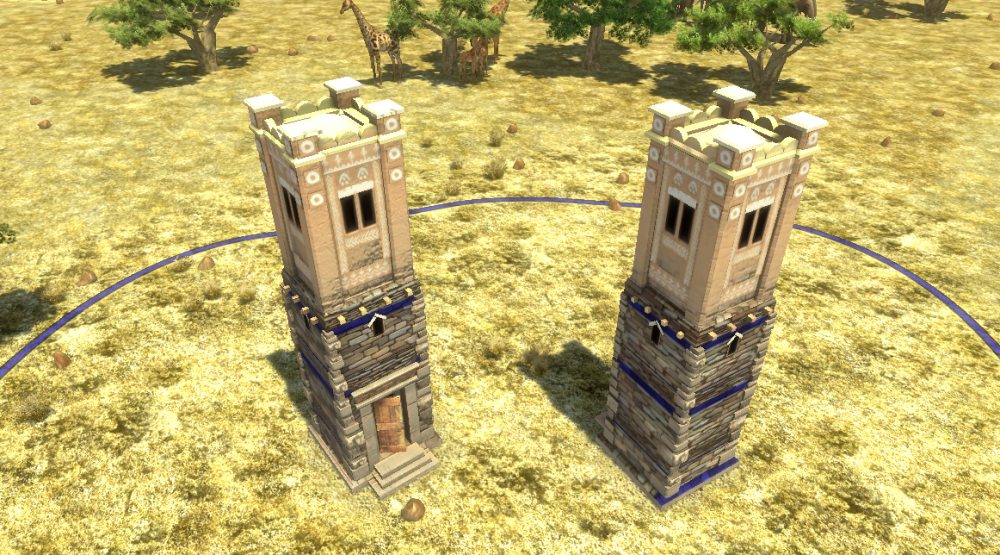Leaderboard
Popular Content
Showing content with the highest reputation on 2017-05-15 in all areas
-
Nice art and research you've shared! I totally support introducing the kingdom of Kush into 0 AD. I'd even go so far as to say it should be added to the base game. BTW I am the artist of a couple of the pictures you shared on the last page, and I'm thankful for the attention. Here are a handful of more recent images of Kushites I've produced:4 points
-
4 points
-
3 points
-
Idea for special unit: Government Minister. Walks around looking all administrative and authoritarian. Has either aura or special ability to make units build and gather faster and boost buildings' production queue. I wish we could have special abilities or commands, like the Pharaoh in Age of Mythology. You would task the Pharaoh to any building and it would just work much much better. Task it to a foundation and the units building it would build it faster. Task it to a storehouse or granary and nearby units would gather faster. Something like this. Max number of Han Ministers would be 9, per historicity: https://www.wikiwand.com/en/Nine_Ministers We can reintroduce the Government Center and they can be trained from there, plus some special techs. Han player would start with 1 as the special starting unit.3 points
-
Yep, this is the major one. Would be nice to have Arabic style clothing and headwear for this unit and for the Ptolemaic Nabataean Camel Archer.3 points
-
The Kingdom of Kush: Unit: Meroitic Pikeman 0 A.D.-Dedicated Art by Sundiata The third in this series of ancient Kushite warriors, depicts a Meroitic Pikeman. Probably due to both New Kingdom Egyptian influence as well as later Hellenic influences, the rulers of Kush were able to field pikemen, fighting in phalanx. The unit I depicted is referenced in part by the Egyptian Nakhtu-aa "strong arm boys". Parallels of the general shape of the shield can be found on the graffito of Musawwarat. In this context, the leopard skin covering the wooden shield can be seen as a sign of devotion to Amun. His cotton armor showcases a variation of the type I already depicted in the two previous units. The tightly fitting blue skullcap (bronze cap, covered by padded cotton) is amply attested in Kushite reliefs, and seems to have been a prized object. The pike he wields is copied from a relief depicting Queen Amanishakheto executing prisoners, and the thick bronze or golden necklace is also attested in a variety of Kushite reliefs, indicating some level of nobility. Meroitic Pikeman, by Malcolm Kwadwo Kwarte Quartey (Sundiata) [Licensed CC BY-SA 3.0] @Tiber7 You're absolutely right, in future I will be making more use of spoilers if I share a large quantity of images again.3 points
-
This is an updated and expanded version of The Road to Expert for the a21 balance. Don't fall into any of these early game traps: Farms go adjacent to your CC or farmstead, as close as they will go. I've seen many new players who put them a distance back. Don't do that. Don't use women for mining. Don't use men for food gathering. Use women or men for woodcutting. Cavalry are for hunting chickens or other animals. Only cavalry are good at this. Hunting is a very fast way to get food unless the animals are very far from the dropsite. If you have berries, build a farmstead right next to them and have some women harvest the berries. It's twice as fast as farming. Don't let your workers carry resources too far. Put the storehouse right adjacent to the trees when they chop wood. If your workers (except for hunting cavalry) are walking twice the width of a storehouse to return resources, they are walking too far. Don't make a barracks until at least the end of age I. A lot of new players make a barracks way too early, or even more than one. Your CC can produce enough soldiers by itself. Don't make walls in age I either. Good players generally agree not to use walls, anyway, and plus in age I it's just a waste of resources that the enemy can simply walk around. Sentry towers are good only if you are right next to enemy territory and you want to prevent him from building a sentry tower that can attack your workers. Don't start mining anything until the end of age I. You don't need it. Don't use formations. Especially don't gather your army in age I and set it in formation outside your base to defend. That army is composed of workers, and should be harvesting resources at all times, unless you are using it to raid the enemy (an advanced technique). Corrals are an advanced technique because they require more micromanagement and there is a long delay before you get any net food from them (for a minute or two after you start building cavalry and corrals, they just cost you food and wood). Instead of corrals, use hunting, fields, or berries. Practice until you can have constant production of units from your CC (Civic Center) for the first 10+ minutes. That means: You need enough food income to produce women nonstop until population 50-70. You can produce soldiers after that. If you're planning on having a big economy, you can go up to 70 women, which does leave you more vulnerable to early attacks. You can use fewer women if you expect raids. Of course, if you're actually being raided, you need to make soldiers to defend (usually spearmen and cavalry). You need enough wood to make houses - and you need to make houses far enough ahead of time so that you don't get stopped by the population limit. Batch Production: like the previous step, learn to maintain constant production, but now with large batches (shift-click on the unit production icon several times to produce multiple at a time). Batch production by 5 is 38% faster than producing single units. Batch production by 10 is 57% faster. Batch production by 15 is 72% faster. It is absolutely worth it to make a batch of even 15 or 20, if you have the resources and population. You need more food to batch produce women this way. That means more on berries (like 10), more hunting, or earlier farms. You need to plan houses more in advance, too, so that you have enough population open when it's time to produce. A rule of thumb on houses is that (except for ptolemies) in the time it takes you to create 10 population worth of workers at your CC, one builder can build 10 population worth of houses. If you need a house faster than that, use several workers to build it. However, note that using more workers on the same house is less efficient, so build with just 1 worker if you don't need a house faster. However, note that it's inefficient to build more houses than you need. Don't be at 30 pop with 50 pop worth of houses; spend the wood on something else. Produce as large a batch as possible, but don't delay more than a few seconds to make a batch. It's better to just be producing 1 unit if you don't have enough houses or food for a batch. Don't queue up more than 1 batch of units from your CC at a time. Wait until the previous batch finishes, so your next batch can be as large as possible. Minimum batch size is configurable in the settings. Use a minimum batch size as small as you feel comfortable with - a minimum batch size of 1 is "optimal" because it lets you produce as large a batch as you have resources for, but it requires more clicks to produce a batch of a given size. borg-, who is the best player, uses a batch size of 2. Practice not harvesting resources you can't spend. If you're ever thinking "I have more food than I need - but I wish I had more wood" then you need to transfer some workers from food to wood, and figure out some way to spend the food. (Actually, you probably needed to transfer the workers two minutes ago, but late is better than never). If you have 1000 of any resource in age I-II, you have way too much. This can be counterintuitive to some new players, who think that because they have 5000 wood banked up that their economy is strong. A strong economy means you have a high income, not a high amount banked up. Resources you aren't spending aren't doing you any good. If you have extra wood, a good way to spend it is on economy upgrades. The highest priority upgrade is berry gathering, then woodcutting, then farming, then mining. You want economy upgrades as early as possible so you get the benefit for longer, except for the upgrades that are super expensive. Adjust your typical build order so that you avoid having too much of the resource. If, last game, you had way more wood than you could spend, then this game, don't put as many workers on wood so early. And so on. This is the true mark of skill in building your economy. You know you're doing it right when you have just enough of every resource you need, exactly when you need it, and little excess, and are producing in large batches. Watch replays of good players! A lot of people don't know where replays are. From the starting screen, they are under Tools/Options. Switch to that player's perspective in the replay and follow what they do - what they build, when they build it, how many farms they make, when they get upgrades. Then try to copy them in your next game. If you're spectating a game with good players, you can switch to the perspective of the best player and watch them as they play, instead of going to the replay. A list of good players can be found in this thread: multiplayer rankings . The ones near the top of the list, especially if they are also at the left margin, are the best players. Practice using Shift to queue up actions. For instance, don't just tell your woodcutter to make a house - tell him to make a house, then shift-click back on the tree! That way he will go back to woodcutting when he's done building the house, and he won't be idle. I always do this whenever I build a structure. If you change your mind and want him to make a second house instead of going back to the trees, you should first select him, then click (without shift) on the house he's building to clear his work queue, then shift-click to build the new house. If you just shift clicked to build the second house, he would go back to the trees like you told him earlier after finishing his current house instead of building the second one. Work out exactly what you will do in the first minute, with low resources (the usual resource setting). This is a "build order." For every civ, you want to put the cavalry on chickens and the women on berries, and the men on wood. You also generally want the first batch of 6 women produced from the CC to chop wood (depending a little on your minimum batch size), and the next 5 women from the CC to harvest berries, after which you will be at 20 population. The order in which you make a storehouse, a farmstead, get the berry upgrade, and make your first house can vary. Britons and Gauls can build a farmstead at the berries, build a storehouse at the wood, and research the berry upgrade. They will have plenty of time to get 75 wood and make their first house, because they get a population bonus from making the farmstead and storehouse. Most civs have houses that cost 150 wood and grant 10 population. With these you can't get the farmstead, the storehouse, and the berry upgrade all at once, and still have enough wood for your first house. You have to pick between the storehouse and the berry upgrade. If wood is very close to your CC, you can get the farmstead and berry upgrade, and get the storehouse later. If wood is far away, you need a storehouse (and a farmstead), so you have to skip the berry upgrade to have enough wood for the house. With these civs you will need to use 3-4 workers to make the house once you have 150 wood, so that it will be done in time. With a civ that has a house that costs 150 wood, I batch 6 women and put them on wood, batch 2 women for berries, start to batch 2 more women for berries and at the same time start making the house with 4-5 woodcutters (I have woodcutters return wood prematurely to have 150 wood soon enough), make one last woman for berries, and now I'm at 20 pop and the house finishes just as the last woman is produced. Iberians and Mauryans occupy a middle ground since their houses cost 75 wood but they don't have the population bonuses of Britons/Gauls. You can figure something out if you want to play these. Mauryans have an elephant, which can do the job of a storehouse or farmstead and help build houses. Ptolemies need less wood, but at least two workers building houses (perhaps three or four). Work out more of your typical build order. After you're at 20 population, additional women should go on wood. "Five fields as fast as possible" is a good rule of thumb - make sure that you are already building your next house, and then if you have 100 wood, make a field and put 5 women on it, until you have 5 fields with 25 women on them. You can transfer women from wood to farming if your CC doesn't have a batch ready when it's time for the next field. If you have extra berry patches, build farmsteads by them instead of making farms. You can figure that one berry patch with 5 women on it equals two farms. You will need to make farms later when the berries run out. Be aware that berries leave you more vulnerable to cavalry raids, but they're still usually worth it. If there's plenty of hunting, you can build some extra cavalry to hunt instead of women (usually, start hunting sometime after population 20). Shift-click your cavalry beyond the animal, and then shift-click on the animal, so that when the animal runs it will come back to your base. Don't make too many cavalry; make sure you're getting enough wood in proportion to your food income. Hunting gets you a lot of food. To transfer women from wood to farming, select the women, then shift-click on the storehouse so they drop off the wood, then shift-click to build the farm. This ensures they do not waste their last load of wood when they stop chopping. You can also go up to six, seven, or eight fields, and indeed you should if you are booming your economy. Use hotkeys for at least your production buildings, perhaps also other units. Select your CC and press Ctrl-1, and now you can select the CC again just by pressing 1. Your barracks can go on group 2. This helps you to keep production going smoothly even if your attention is elsewhere. Learn to use attack-walk. This is the hotkey "ctrl", combined with a right click. Units on attack-walk will attack enemy units in their way. If you don't want your soldiers to attack buildings automatically (usually you don't), you can use ctrl-q-click to have them target only units. I actually have edited my local.cfg file (see https://trac.wildfiregames.com/wiki/GameDataPaths ) so that ctrl-click targets only units. During a large melee combat, repeatedly select your units and ctrl-click. This makes them choose new targets close to them, and stops them from walking to targets far away. Doing this increases your army's DPS. Learn the difference between attacking a structure or siege engine, and capturing it. Ctrl-click on the structure for your units to deal damage to the structure. Bear in mind that most units are pretty bad at damaging structures, the main exceptions being slingers and siege engines, and swordsmen to a lesser extent. Otherwise, a regular click will make your units try to capture the structure, which may be impossible if the structure is garrisoned, unless you've heavily damaged the structure first. Usually you want to kill the enemy army before attacking or capturing any structures. Otherwise you will take large amounts of damage while attacking the structure. Rushes! Cavalry rushes are hot in a21. It's best to use melee cavalry, because they kill women faster: Macedonians and Romans have melee cavalry in age I, and many civilizations have melee cavalry in age 2. Attacking your enemy is a good idea if you've been using cavalry for hunting, after the animals run out. It's best to use at least 10 cavalry for raiding. That way, they kill things fast enough, and damage will be spread over the group so that fewer cavalry die. Target women preferentially, or enemy soldiers in small groups. Run away from larger groups of spearmen. Put your cavalry on a hotkey so you can control them more easily. To attack, run the cavalry (without attack-walk!) past the enemy units, until the cavalry are mixed with the enemy a bit. Then ctrl-click to have them all suddenly attack, or alternatively press "h" which makes them halt their current run order, and attack the enemy. If you're attacking and more enemy soldiers (especially spearmen) show up, run away just before they get there. You only want to fight where you have a big advantage. Keep running away and attacking a few times, until you notice the average HP of your cavalry is getting low (if the average HP is below perhaps 60% or 70%, that means many cavalry are on the verge of death). Then you should retreat your cavalry and put them in your CC or in your temple. After they've healed, you can attack again. You don't want to let your cavalry die if you can avoid it; you want to maintain a high kill/death ratio. If the enemy is chasing you with too many of his worker soldiers, you can just keep running around. As long as they are chasing you, they're not working, so your attack is costing him resources. If the enemy defends with cavalry, you should kill them with a large number of your own cavalry. If he has too many, you have to run away and think about your own defense if he counterattacks. If you're raiding in age 2, build a temple to heal afterwards. If your first rush is effective, just keep making cavalry to make it even more effective. You can keep two groups of cavalry, one in the temple healing, the other out raiding the enemy, and switch them so he is under constant pressure. They should be under two control groups. Your production buildings need to be on hotkeys as well so you can keep your economy going while you are raiding. To defend against rushes, it's first important to use the bell icon on your civic center. Click it when a raid is coming, and all women will try to hide in houses or your CC. This will prevent the enemy cavalry from slaughtering them all. There's another bell icon on your CC to end the alert and send your women back to work. Also mix spearmen with your women. If rushes are really bad, you can try farming with spearmen, or just leaving some spearmen idle by the fields. Building a solid wall of houses around your fields can help a lot. Getting cavalry of your own is also good. Sadly, towers are not that effective at stopping cavalry rushes. They do help, but cavalry can just keep running by them unless you really have a lot of garrisoned towers. It only takes a few seconds to kill some of your women, then the cavalry can go back and heal. It's better to rely on spearmen, walls of houses, and your own cavalry. Hold down alt and drag over your woodcutters or miners to select only the soldiers, and not the women. After you've used some soldiers to chase after the raiders, you can click the "back to work" button with the soldiers selected (looks kind of like a brown wagon wheel or maybe a basket) and your workers will go back to chopping or mining. Skiritai rush Play Spartans, ideally with a 200+ population limit. Boom to 60 population with only women (hoping you don't get rushed), then make 10 spearmen and put them on mining metal. Go to age II while making 2 barracks ASAP. Once in age II, start producing batches of only skiritai from your 2 barracks, with your CC idle. As soon as you produce each batch of skiritai, send it over to the enemy. You can use them like cavalry raiders to kill farmers, and you can also fight the enemy army unless they have greatly superior numbers, because skiritai are stronger than normal soldiers. Unlike with cavalry raids, usually just let the skiritai keep raiding until they die; they are too slow to walk back and heal. If all goes well, his army and economy are dead by 10-11 minutes into the game. Briton slinger spam This is a very powerful and common strategy. Boom a bit with women in age I, then start making slingers and mining stone. Go to age II, continuing to boom. Here you can make some celtic cavalry to go raid the enemy or just keep booming. Switch to making spearmen later in age II so that you have enough stone to get to age III soon. When you're going III, make sure you mine enough stone for a fortress, from which you make Cunobelin. Then select Cunobelin and all your slingers and spearmen (alt-double click on a slinger to select all slingers, shift alt-double click on a spearmen to select all spearmen, and bind the whole army to a hotkey), and send them at the enemy. Make sure Cunobelin doesn't die, because his healing is very powerful. It's good to keep making celtic cavalry in age III to raid or to kill enemy archers. Elephants and archers Boom to age III with any civilization that has both archers and elephants. For citizen soldiers, make archers. Once in age III, make a fortress (or persian hall, or elephant stables) and 3-5 war elephants. Select all your archers (should be 100+ archers) and attack (make sure you have temples to heal after). The elephants go in front. The enemy will be forced to kill the elephants, which are very tough, while the archers shoot the enemy. When the elephants are dead and the enemy is coming for you, send your archers back to your temples and heal, and make more elephants for round 2. The enemy usually loses more soldiers than you do, each time you attack like this. Also can work well with cavalry instead of archers, or cavalry mixed in. If the enemy has cavalry you might put some spearmen among your archers to defend. Seleucids can use massed Dahae Horse Archers, which become very tough with the Seleucid cavalry hero and the Seleucid bonus cavalry health upgrade. Caution! You cannot kill rams with archers. It's best to keep around some swordsmen or have an ally who can kill rams for you. Elephants can kill rams, if you manage to maneuver them into the same place, which is not easy. Trade In a long game, mines will start to run out. It's important in this case to start making lots of traders, to defend your traders, and to kill the enemy traders. 50 traders per player is a good number in a 200 population game. For both raiding and defending against raids, you want melee cavalry, and don't forget the walk speed upgrades at the corral. Having many fortresses and towers along the trade route helps as well, in part because you can garrison the traders in the fortresses/towers (also in houses or CCs). Long trade routes give more income, but are harder to defend. You want to set up the longest trade route that you can defend. Champions There is a difference of opinion on the value of champions in a21. I personally feel they are usually not that useful unless the game goes on for a long time, such as because there is a narrow chokepoint or it's a naval map. I prefer to get upgrades for my citizen-soldiers before I start making champions (except for war elephants, of course!). Massed archers, slingers, or war elephants can fight effectively against a couple dozen enemy infantry champs at a time, which is why you attack before the enemy has amassed larger numbers. However, there are some experts who swear by champions. An exception: Athens has champion archers which are basically the reason to play Athens. Athens can produce these archers from relatively cheap buildings, which makes it easier to mass large numbers of them. Use citizen-soldier spearmen to defend the archers against cavalry, and to tank damage when fighting enemy infantry. The downside is that Athens have no rams or elephants, only catapults which deal damage very slowly, so ideally you would have allies to send rams or elephants for you. Melee cavalry champions are effective at raiding later on, and can capture buildings and even CCs if the enemy army is busy somewhere else. Coordination with your allies Before doing a big attack, look around and see if your ally has an army that can help you. Ask him. A combined push is much better. If you are getting attacked, or if you see a large enemy army on the move to one of your allies, or if you see enemy cavalry raiders, don't forget to tell your allies what's going on. A simple "purple attacks mid" when you see the purple player send an army through the center, can help your team a lot. If an ally is getting attacked and needs help, one option is to help defend him. Another option is to counterattack and kill the enemy's undefended base. Which you do should depend on how close your ally is to you, how fast your army is (a fast cavalry army can defend allies better), and whether you have an army that can kill buildings quickly (slingers/rams/elephants). When the enemy is attacking (or when your teammates are attacking) is also a good time to use your cavalry to raid his women and traders, because the enemy's attention is split and he may not react in time to your raiders. Another possibility if an ally is under attack, is to send them resources. However, for this to work, the attack needs to proceed slowly enough that they have time to spend the resources. If you need resources, or have extra resources, don't hesitate to ask/offer. In a 3v3 or 4v4, it's good to have at least one player on your team who commits to making tons of melee cavalry for raids and for assisting allies.2 points
-
@stanislas69: Another request is a Shipyard. Basically a Chinese version of the Athenian/Greek dock, with the partially built warship props. Also it would be awesome to finish the bamboo palisade models so we can put them into the mods. Maybe as a minor bonus, their bamboo palisades can be built in neutral territory. No rush, just some requests.2 points
-
@stanislas69 I'm note really sure if I can make a very good tutorial on how to work on textures, all I can provide are tips which I learned and gained in my two years of creating textures here You can have a grasp on ideas on how my work flow on textures go if you will look on my .psd source files I mostly make use and photo manipulate in game textures which I find useful (The skirt and the cloth wrapped around the waist of the Judean slinger was derived from the 0ad Mauryan unit textures) I just colored a new layer underneath the Mauryan unit .png texture, to get the skirt details Then adjusted the contrast to make it look sharper and better Next step was to decolorize it by adjusting the hue or the color to zero And the final step is to adjust the skirt texture color to something close to light gray, as I find it the best when using multiply layer settings Other tips Multiply layers (or the shape detail layer, i.e. skirt folds) should be smooth as possible. It should only contain the shading details Texture details (such as textile details or dirt details) should be placed underneath the multiply layers When making color layers underneath multiply layers, just duplicate the multiply layer and place it underneath, change the duplicated layer from multiply back to normal, then use preserve opacity settings (A setting where the active area is restricted to the contents of a layer, not sure what it is called in Adobe Photoshop) After choosing a desired color, you can now add layer textures to emulate general texture details, such as, metal texture or cloth textures. Shadows or edge details are done using the same steps above, just duplicate and place in the very bottom of the part that you are working, after duplicating the layer, adjust the brightness to zero, then move it 1 or 2 pixels to the left and 1 or two pixels to the right (Depending on the kind of texture, for example, if you want a shield boss to appear edged over a texture, you will need to move the edge details layer 1 or 2 pixels on all sides, up, bottom, left and right. The final step here is to reduce the opacity of this layer between 15% to 75% or higher, depending on your preference so that the shadow or edge doesn't look too strong or dark. You will understand this better if you look through my .psd files I hope this helps2 points
-
See https://trac.wildfiregames.com/ticket/72 and https://trac.wildfiregames.com/ticket/108 That sounds like great news, how many people are working for wyrmsun atm ? I hope you'll succeed migrating your engine. We will all benefit from this. EDIT: Anyway If you need anything you could ask me. I'm sure @Itms might be able to help too / might be interested in that kind of collaboration,1 point
-
Hey Andrettin, the only animated thing I know that is not a 3d model is water, so i'd say yes, but probably not in the way you want. May I ask why ?1 point
-
There is a chance that hosting without having your ports forwarded will be possible since the next alpha release (https://code.wildfiregames.com/D364).1 point
-
1 point
-
Yeah, luckily it is still summer break, I can still work on the textures, I still have to finish the Gallic textures and Millennium AD's textures too1 point
-
@Lion.Kanzen The current source file 051517 - Judean.psd1 point
-
Was Tarantine Cavalry a unit from classic AOE1? Just notice that one.1 point
-
It is not a dragon as Lion mentioned it's a Foo Dog a celestial guardian figure dragons are reserved for the imperial family and only displayed in the Imperial Court to represent the mandate of heaven with a five toed Tien Lung. Enjoy the Choice1 point
-
Nice! Maybe scale the dragon up a bit though. Needs to look as impressive as the Buddhe or Athena statues.1 point
-
1 point
-
1 point
-
Congratulations. There are a couple dozen people playing online in the A21 lobby currently. Try some of the mods? Argue on the forums about game balancing? Share your secrets for success against the AI? Explore any maps you haven't played on? Up to you. And welcome to the community.1 point
-
1 point
-
1 point
-
Got the Han to work in DE. I need to make up some technologies, but for the most part everything is working as intended after a lot of adjustments and stuff. Maybe make that gate thing their glory statue instead of the Buddha. A Páifāng? Sacred Gate? Please advise. Some things that would be great to fix, add, or change, all my opinion. Wonder: Weiyang Palace. Perfect suggestion from @Lion.Kanzen. Would make nice challenge for a modelier. Fix helmets and other props for new head meshes. 1 more hero. 1 more champion if the chariot is okay as a champion. If not, need 2 champions. Animations for the crossbowmen and their crossbows. Redesign for the Blacksmith. It is way too big. Minor redesign of the Market. It's kind of big. The tarps could use some kind of nice player color design on them. I'll move the archer infantry and archer cavalry to the mercenary camp, while keeping the crossbow units in the barracks. Maybe some way to allow the walls to connect to the Fortress. I'll experiment a little with this. A model for the Civic Center without the two side towers. I'd like to add a defensive tech to the Han cc that adds the towers to the structure. This should be rather easy. Ideas for the Blacksmith and Temple tech trees. These should probably be largely custom/different from the "Western" tech trees already in the mod.1 point
-
sphyrth: Here are some games I hosted for butcher=benny. He used to be the best player and still is top 5. wwbutcher.zip1 point
-
1 point
-
5) In Delenda Est, play as the Principate Romans to see a "proof of concept" for the slave vs. citizen concept. 6) Phase 4 in DE is a lot different than what I propose here in this thread for the main game. In DE, Phase IV is more about gaining access to those high level upgrades to help break a stalemate or dominate your opponents. Reaching phase IV isn't necessary for victory, as I imagine most "competitive" games playing DE would end in phase 3, like in Age of Empires games. No, Phase IV in this proposal is much different, it's more about designating one of your provinces your "Capital", and thus gaining some very special advantages for this province. Only one province can be the capital, and it's achieved by building a wonder inside its territory. I agree, it's not about "removing" micromanagement, it's about changing its nature, from that of micromanaging the movements of every single little soldier, to managing the movements and attacks of groups of soldiers. It's a much different feel. It also moves management from the single-soldier mosh pit style to the tactical placement, charging, standing ground, etc. of the mass combat that defines the era of the game. The player can feel like he or she is commanding a battle instead of MCing a rave.1 point
-
Sooooooooooo it took me 1h30 to read all this topic! I'll give my humble opinion on some of the points discussed: 1) I tried Delenda Est (did 5 games) and I really love it. It has a deeper strategic dimension with all the choices for the upgrades, the fact that you can build storehouse/farmstead/farms outside of your territory (do you take the risk to send women to that juicy fruits in the middle of the map? That’s the kind of questions you want to ask yourself once playing an RTS) 2) About battalions: a. The “problem” of the pop cap is a fake problem but I’m not going to go back to this matter b. I played BFME2 in very high competition (I played on clanwars.cc, my clan reached top 10 almost every month for a year and I was top 10 a few months in a row individually, at that time the best clan was JR for those who remembers) Well let me tell you one thing, battalion doesn’t remove micro management, competitive games were all about micro-management while keeping your farms up and running. A lot of harass from the beginning etc.. Of course watching Slayer_Boxer on starcraft micro-managing his marines individually perfectly was awesome but maybe it’s one of the reason you have so many players who actually watch the game more than they play (because they cannot reach that awesomeness) c. Beating very hard IA has nothing to do with all of this. d. Is it very hard to implement? I’d love to try it on 0AD actually, it would end this discussion quickly 3) About citizen soldiers a. That’s one of the reason I love so much 0AD but we can improve it obviously b. I think the main problem is what Darc said, you are actually loosing resources when attacking. But what if women gathered all ressrouces faster (how much faster need to be decided) than citizen soldiers? That way you can boom with women but be vulnerable to a citizen-soldier rush (and the citizen soldier rush would lose against a mix of women / citizen-soldier early game with a few wood towers) and then we have the rush > boom > turtle > rush base. 4) I love the general concept of strong core, weak country side. In terms of strategy it’s very nice, and it is realistic. And the fact that you can actually choose that your second settlement with be your core if you focus buildings on it is very nice too. 5) Not sure about the slave, I think citizen, soldier-gatherers, champions and heroes are enough for a good gameplay. 6) I already told wow privately, I do not like 4 phases. I didn’t like it on age of empires too. I like having three phases on the vanilla game (the problem at the moment is that phase 2 became useless due to the fact that you can’t harass anything before reaching phase 3 (with a few exceptions of course) and you can actually see this in multiplayer game where everybody just makes 4 towers phase 1 then upgrade those phase 2 to go directly to phase 3 (so basically skip phase2)). I think having phase 1 to build your economy, phase 2 for trading/expanding/military (Should be the longest phase imo) and phase 3 for late game stuff is good. Anyway this is a very exciting topic!1 point
-
1 point





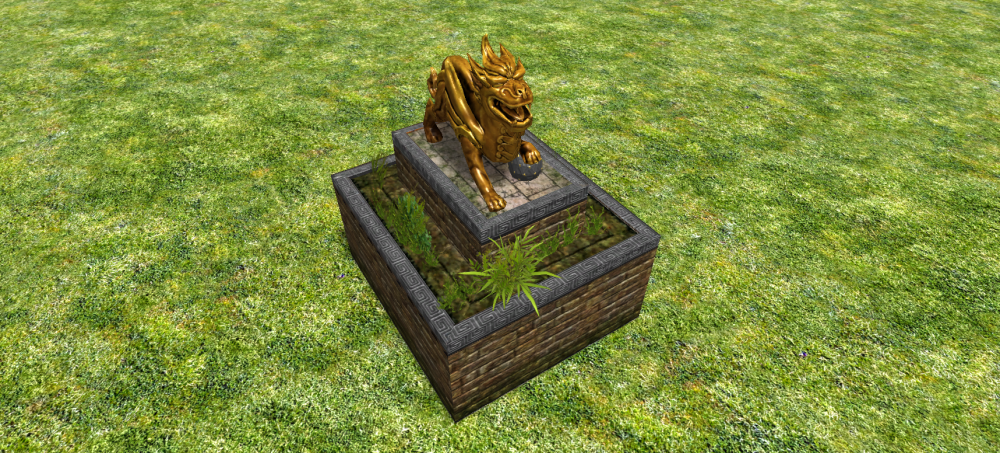
.thumb.png.ce58cea22940c255f5b0a735d5abee36.png)

